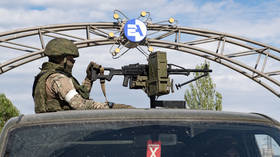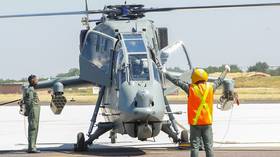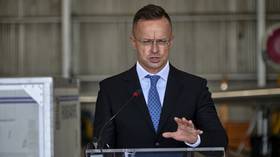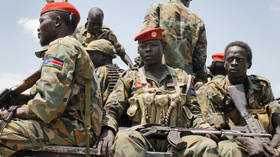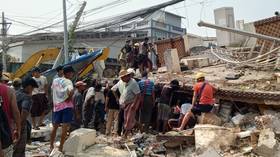Kursk kamikaze attack: The price of Ukraine’s foolish gamble is becoming clearer by the day
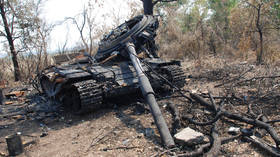
Almost a month ago, on August 6, Ukraine launched a major incursion into the Russian border region of Kursk. Despite initial advances, this offensive was doomed to fail. Indeed, there was something of a kamikaze attack about it, as some observers, this one included, pointed out at the time.
Fielding brigades of its most experienced and best equipped troops for an assault that had nowhere to go and could not possibly draw on sufficient reserves, Vladimir Zelensky’s regime did not simply gamble but invite certain defeat. In the process, it weakened its own defenses against steady and accelerating Russian advances on other parts of the front line. It also irritated its Western sponsors, who – on the whole – were perplexed by this waste of scarce Ukrainian resources that in many cases were actually foreign resources.
It is true that Ukraine has managed to inflict suffering and damage, especially on civilians. Kiev’s probable aim of reaching the Kursk nuclear power station to execute some kind of blackmail scheme has, however, not been realized. That the ‘Kursk Kamikaze’ was going to fail was clear from the beginning. This failure is not the same as Russia finally liquidating this temporary occupation of a minuscule percentage (0.0058823529%) of its territory. While that moment is still in the future, the cost of the Kursk incursion for Ukraine is already rising, day by day and relentlessly.
Three key aspects of this ongoing failure are especially important: First, according to Zelensky regime key cadre Mikhail Podoliak, the aim of the Kursk operation was to compel Moscow to negotiate an end to the conflict on Ukrainian conditions. He also implied that Kiev was occupying Russian territory for a later swap. Given Russia’s military capabilities and reserves, that was always a bizarrely unrealistic idea. But it has not simply failed to come true; instead, the Kursk Kamikaze has produced the opposite: a further hardening of Moscow’s position.
President Vladimir Putin has reiterated Russia’s longstanding position, namely that it is principally ready for negotiations. Yet he has also made clear that they cannot begin before the elimination of the Kursk incursion. While Western information war narratives desperately try to depict his statements as flip-flopping under Ukrainian pressure, the opposite is true: In reality, the Russian president has expressed his hope that after a Ukrainian defeat in Kursk Region, Moscow’s opponents will sober up sufficiently to be ready for a realistic compromise.
Second, another aim of the Ukrainian offensive was to force the Russian military to withdraw forces from other parts of their front line, especially in the area of the city of Pokrovsk, about 50km to the northwest of Donetsk. Yet that, too, has not happened. Instead, the Ukrainian authorities are evacuating Pokrovsk, and Russia is about to take the city.
According to an anonymous Ukrainian officer there, who has spoken to the French newspaper Le Monde, the fall of Pokrovsk is a “military catastrophe” that has been accelerated by the fact that at least some of “our best units left to take part in the Kursk offensive.” This is not the opinion of one stressed man on the front line. The British Telegraph, a fanatically gung-ho and Russophobic outlet, agrees that “since Ukraine pulled elite units from [Donbass] for its incursion into Kursk, the Russian advance has accelerated.”
The result: a “stampede,” in which Russian attackers drive Ukrainian defenders from their positions several times not per week but per day. Another Ukrainian soldier – a veteran of the 2023 battle for the town of Artyomovsk (Bakhmut) that lasted to almost a year – expects Pokrovsk to fall rapidly, writing that he has “never seen anything like this,” with “everything falling apart so quickly.” Things are not merely bad, in other words. They are even worse than before.
And, as the Financial Times acknowledges, Pokrovsk is “strategically important.” A major transport hub, its loss will affect Ukraine’s defense of at least what it still has left of the Donetsk region, putting severe pressure on Ukrainian forces around the towns of Toretsk and Chasov Yar, and the strong-points of Slavyansk, Kramatorsk, and Konstantinovka. Beyond that, the loss of Pokrovsk could help open the gates for a Russian drive west up to the Dnieper River.
While Pokrovsk is the single most obvious proof that the Kursk incursion was not a good idea at all, Russia is making accelerating advances in other places as well, adding up to “Moscow’s biggest gains since October 2022.” The Daily Express headline “Ukraine panic as bombshell map shows Russia making huge gains” may be a little sensationalist, but there really is something sensational about just how badly Kiev’s calculations have backfired.
Third, by its incursion across the Russian border, Kiev also wanted to demonstrate that Moscow’s red lines never matter and that, therefore, the West, that is, Washington, should disregard not just some – as of now – but all of them. Specifically, the Ukrainian leadership is trying to cajole the outgoing administration of President Joe Biden to let Kiev use American weapons – especially ATACMS – for even deeper strikes into Russian territory. In addition, Kiev also wants Washington to allow Britain and France to do the same with regard to the Storm Shadow/Scalp missiles they have provided, since, as The Economist reports, the US is quietly holding its vassals back.
In essence, this is another Ukrainian attempt to achieve full compliance from its Western sponsors: Wag the dog on steroids. Or, as Ukraine’s reliably over-explicit now-former Foreign Minister Dmitry Kuleba has told Polish TV, “the greatest task is to persuade our [Western] allies not to think about Moscow’s reaction.” Berlin, Paris, London, Washington, listen up: Russia perhaps striking back at your own militaries, countries, and populations? Just don’t even think about it and simply do what Kiev tells you, because, obviously, why would you not trust the regime that sabotaged Minsk II, missed an early peace at Istanbul, had a hand in bombing European infrastructure, and has now, once again, proven its professional-grade lack of foresight and due diligence by launching the Kursk Kamikaze? Outside the US, only Ukrainian “diplomacy” can be this blunt and self-defeating.
And yet, Kiev still has its useful idiots in the West, where hardliners, such as the Institute for the Study of War or the retired American generals Ben Hodges and Philip M. Breedlove, are not yet ready to give up on their dream of defeating Russia militarily via Ukraine and keep hammering away at both the Biden administration and the American public to lift these last restrictions. Yet, at home in Ukraine, even media largely streamlined under Zelensky, admit that the latter will soon have his “last chance” to persuade Biden, namely on the sidelines of the UN General Assembly in New York.
But the ultimate irony here is that even if Kiev got permission for deeper strikes into Russia with Western weapons, this – as the crossing of so many red lines before – would not save the Zelensky regime. But it would make Moscow even more intransigent and unforgiving once the details of Ukraine’s – and the West’s – defeat have to be settled.
In view of the predictable and yet still shocking catastrophic record of Kiev’s Kursk Kamikaze, it is little wonder that criticism of its creators is growing, both in and outside Ukraine. But what is especially dangerous for the Zelensky regime is the fact that the two are coming together: In the past, mainstream Western media have protected Zelensky and his team by ignoring their critics, in particular in Ukraine. But things are different now. The Financial Times, for instance, has dedicated a long article to the “backlash” faced by the Ukrainian leader. Its author, Christopher Miller, formerly a reliable info war booster of all things Ukrainian and Zelensky, now gives no quarters, noting a “barrage of criticism from [Ukrainian] soldiers, lawmakers and military analysts” hitting the West’s former darling.
And there it is, the final irony of Ukraine’s massive exercise in self-diversion: When the Kursk Kamikaze was launched, the usual Western fantasists speculated that it would be “embarrassing” for the Russian leadership and thus – somehow – make a difference in Kiev’s favor. Yet the worst embarrassment of any military operation is always reserved for the loser, especially when it is obvious that the whole enterprise was totally misconceived and absolutely reckless from the get-go. If anyone will feel shockwaves shaking his power from the fallout of the Kursk Kamikaze, it will be Zelensky, not Putin. And Zelensky will have only himself to blame. Once again.
The statements, views and opinions expressed in this column are solely those of the author and do not necessarily represent those of RT.

